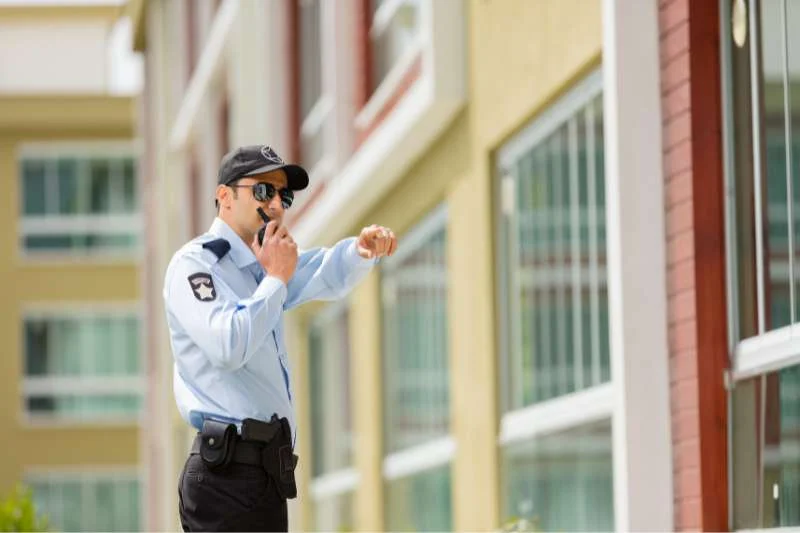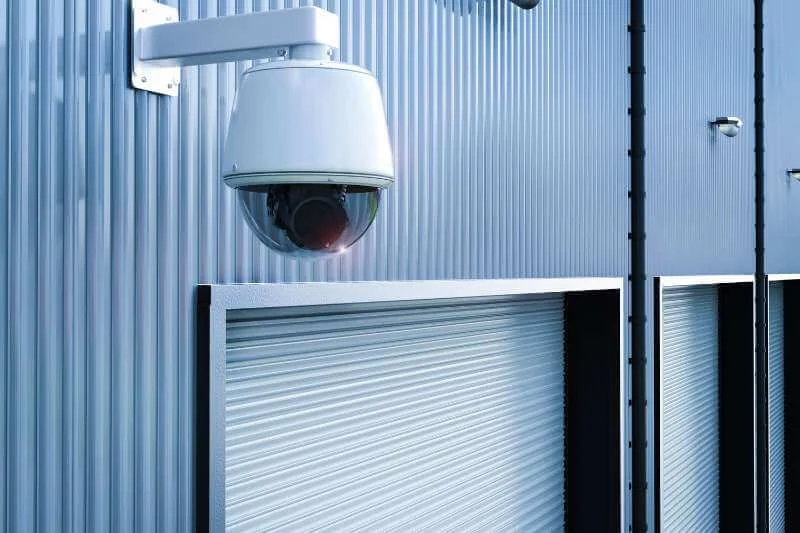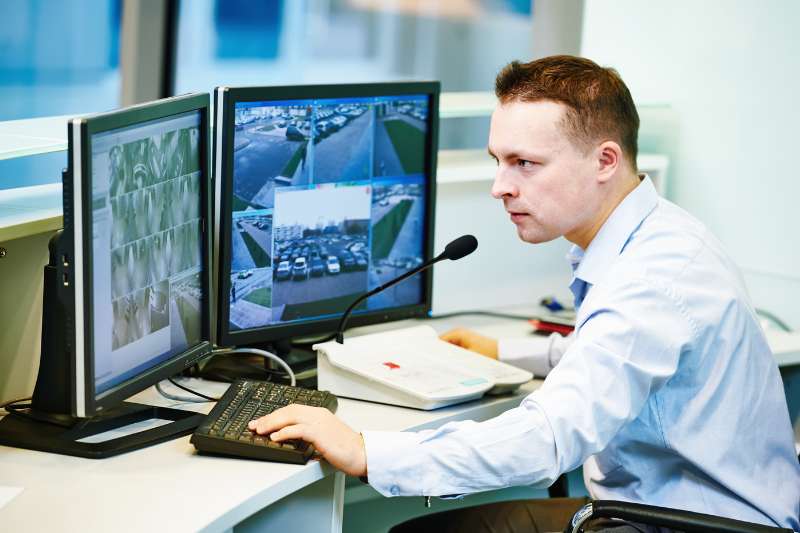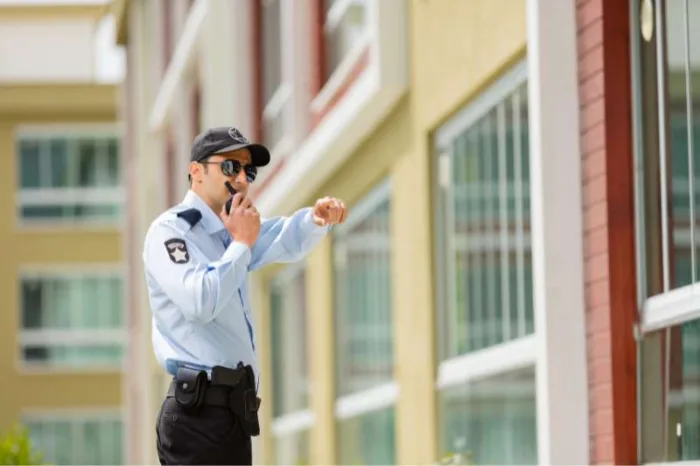
Every property requires some form of physical security, but what do those needs look like or how can they be improved? Well, you can’t be sure until a physical security assessment is performed. Only then can you know what key areas require attention and how to protect them from specific threats. Without such a detailed assessment, your property could be exposed to serious security risks.
To avoid damages to your property, read this post to learn what a physical security assessment is and what properties require such an audit. In addition, you’ll learn the methods of performing a security risk assessment. More importantly, you can take advantage of the physical security assessment checklist if you’d like to audit your own property.
This post covers:
- What is a physical security assessment?
- Who needs a physical security assessment?
- How to do a physical security assessment
- Physical security assessment checklist
What is a physical security assessment?
A physical security assessment, also known as a security audit, analyzes a property’s capabilities to protect against internal and external threats.
It’s important to mention a physical security audit evaluates all aspects of the security, from the physical building and systems in place to daily operating procedures and risk factors. Every part of your property’s physical security is assessed to determine which, if any, areas require improvement before implementing new measures.
Above all, ensure your physical security audit is customized to your property and the unique threats it faces. No two properties are the same, meaning they all face different security challenges, so your assessment should identify those threats and potential risks before evaluating. That way, you can thoroughly and accurately assess your property’s physical security.
Find out how security companies obtain clients:
What’s in a physical security audit?
A physical security audit includes a deep analysis of many property details, such as:
- Potential threats
- Entryways and their usage
- Exits, including exit hardware installed to guarantee safe exits
- Existing security hardware
- Building operations
- Building layout and exterior
- Environmental factors
- Visitor management
How often should you perform a physical security audit?
The recurrence of your physical security audit depends on your property size and security needs.
In most cases, performing a physical security audit one to two times a year is sufficient. However, you may consider bi-annual audits if your property is smaller with fewer needs. On the other hand, properties requiring significant security measures with sensitive assets may audit as often as monthly.
The first thing to remember is to consider the nature of your property and the types of assets it handles. You may even consult some physical security assessment companies for a recommendation if you’re unsure.
Who needs a physical security assessment?
Every property with physical or digital assets benefits from a physical security assessment.
Regardless of the purpose of your property, it requires adequate security for all occupants and assets inside. Even digital assets require a suitable physical security presence. Otherwise, your property could fall victim to stolen or lost data.
Not to mention, as digital and physical spaces merge, security convergence will also occur, combining both physical security and cybersecurity (and sometimes even AI security). As a result, security will become even more essential in protecting properties from a holistic perspective. This means physical security will require the same attention as digital security efforts.
Overall, the types of properties that would benefit from a physical security assessment include:
- Apartments
- Gated communities
- Commercial offices
- Senior housing
- Student housing
- Industrial facilities
- Marinas
- Truck stops
- Salon suites
- Hospitals
- Healthcare facilities

How to do a physical security assessment
When looking to perform a physical security assessment on your property, there are a couple of ways to approach it.
The two ways to tackle a physical security assessment are:
Hire a physical security audit company
Hiring a company is the most effective way to conduct a physical security audit.
There are many professional and experienced security audit companies available for hire. These companies are effective at identifying key areas that require security overhaul. Not only do they know how to improve your property’s security, but they have the resources to perform a comprehensive audit, which many properties struggle to handle.
Once a third party performs an assessment, they’ll provide you with a full security audit report on what areas of your property require attention. These reports are beneficial because they provide you with a checklist of solutions that otherwise would be missed by an internal security audit.
Additionally, physical security assessment companies may offer training for on-site staff to better prepare them for potential threats. In turn, your property can maintain a safer and more secure environment for all personnel.
How much does a physical security assessment cost?
The cost of a physical security assessment varies widely, but you can expect to pay anywhere from $150 to $400 hourly.
Factors that may contribute to the cost of your audit include:
- Company
- Size of the business
- Location
- Scope of the audit
Of course, before deciding, request multiple quotes from local security companies in your area. That way, you can find the best solution for your property.
Perform your own physical security audit
Conversely, you may also perform your own physical security audit. The only requirement you’d need is a thorough physical security assessment checklist and the right amount of time. This way, you save money that would otherwise be spent on a third-party audit.
Performing your own security assessment is especially suitable for smaller properties. They have fewer risks to juggle and are less likely to miss security flaws. However, it may be difficult to formulate an effective solution without proper experience when identifying security risks.
Therefore, it’s vital you follow a comprehensive physical security assessment checklist — like the one below — to ensure you’ve inspected every aspect of your property’s security. Then, you can reach out to a physical security company to help address the security flaws identified.

Physical security assessment checklist
To perform your own physical security assessment, use this checklist:
- Building architecture and landscaping
- Lighting
- Physical barriers
- Security systems
- Communication and protocols
1. Building architecture and landscaping
- How many entryways are there to the building? How are they secured and monitored?
- Are building personnel and visitors screened before being given access to the building (e.g., visitor management solution, security checkpoint)?
- Are there external entry points that could be taken advantage of (e.g., ladder to the roof, parking garage access, etc.)?
- Does the landscaping provide areas of seclusion to hide potential threats?
2. Lighting
- Are the exterior walkways properly lit at all times of the day?
- Do all entryways have sufficient lighting?
- Do areas of concealment have lighting for easy inspection?
3. Physical barriers
- Do all doors and windows operate correctly? Are they able to lock and unlock?
- Are interior doors and areas secured and monitored?
- Are any fences or exterior barriers adequate to keep out intruders? Are they incomplete or damaged?
- How is vehicle access controlled and monitored? Do parking arms and gates operate properly?
- Are bollards in place to prevent property damage or harm to personnel by vehicle?
4. Security systems
- Are all access control systems working as necessary? Do they connect to the fire alarms for safe and efficient exiting of the building?
- Is the building monitored for smoke, fire, or toxic substances? Are the systems in place to monitor these hazards working?
- Is there a forced entry alarm system? If so, who is notified, and what are the protocols?
- Are all electronic or smart door locks working properly?
- Is the property monitored via a CCTV system 24/7? If so, what areas are monitored, and how are they reviewed?
- What areas are and are not monitored by cameras? Are there any areas that aren’t covered that would benefit from surveillance?
5. Communication and protocols
- How is security personnel notified of security breaches or issues (e.g., alarms, phone calls, guards)?
- Are past employees still able to access the building? How are terminated employees kept from accessing the property?
- How often are codes, passwords, or PINs changed?
- Do you have procedures in place for different emergencies (e.g., fire, tornado, active shooter, etc.)?
- Are personnel educated and trained for emergency procedures?
- Are there protocols in place in the event of stolen or lost credentials?






